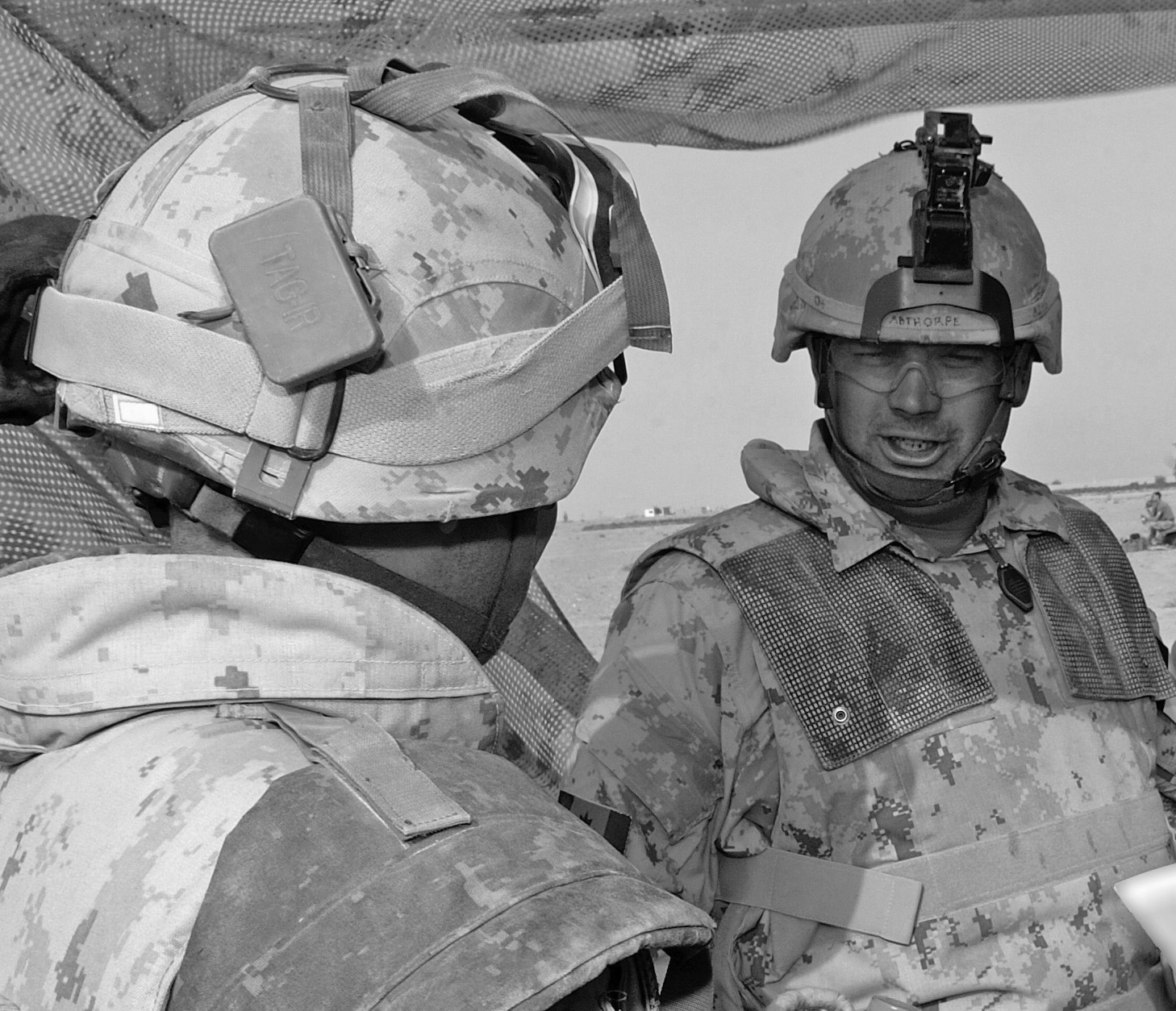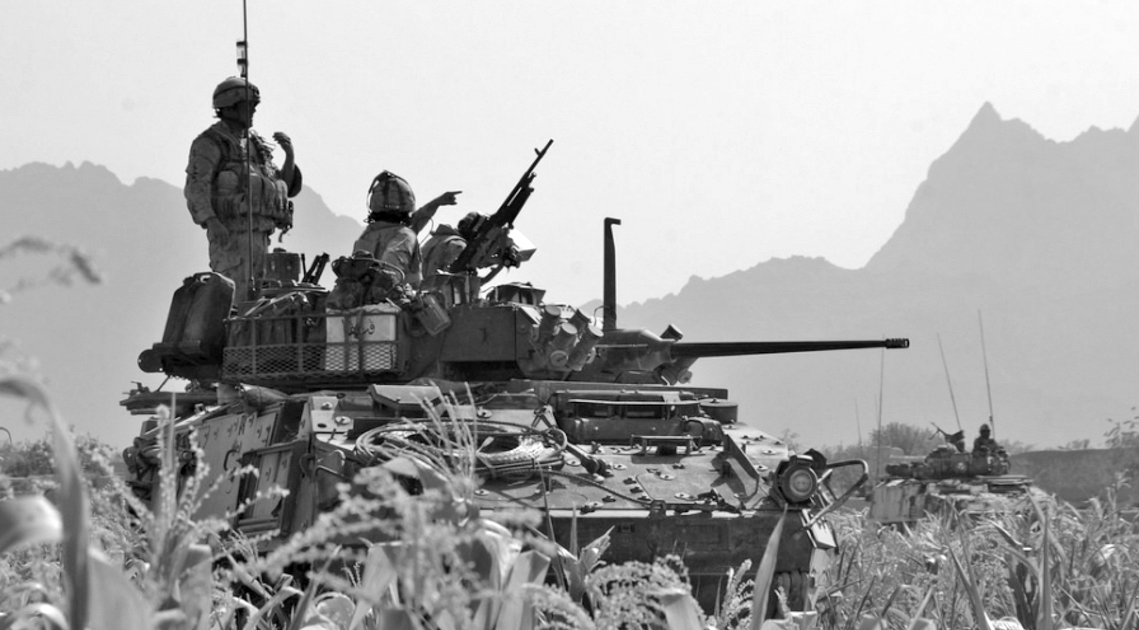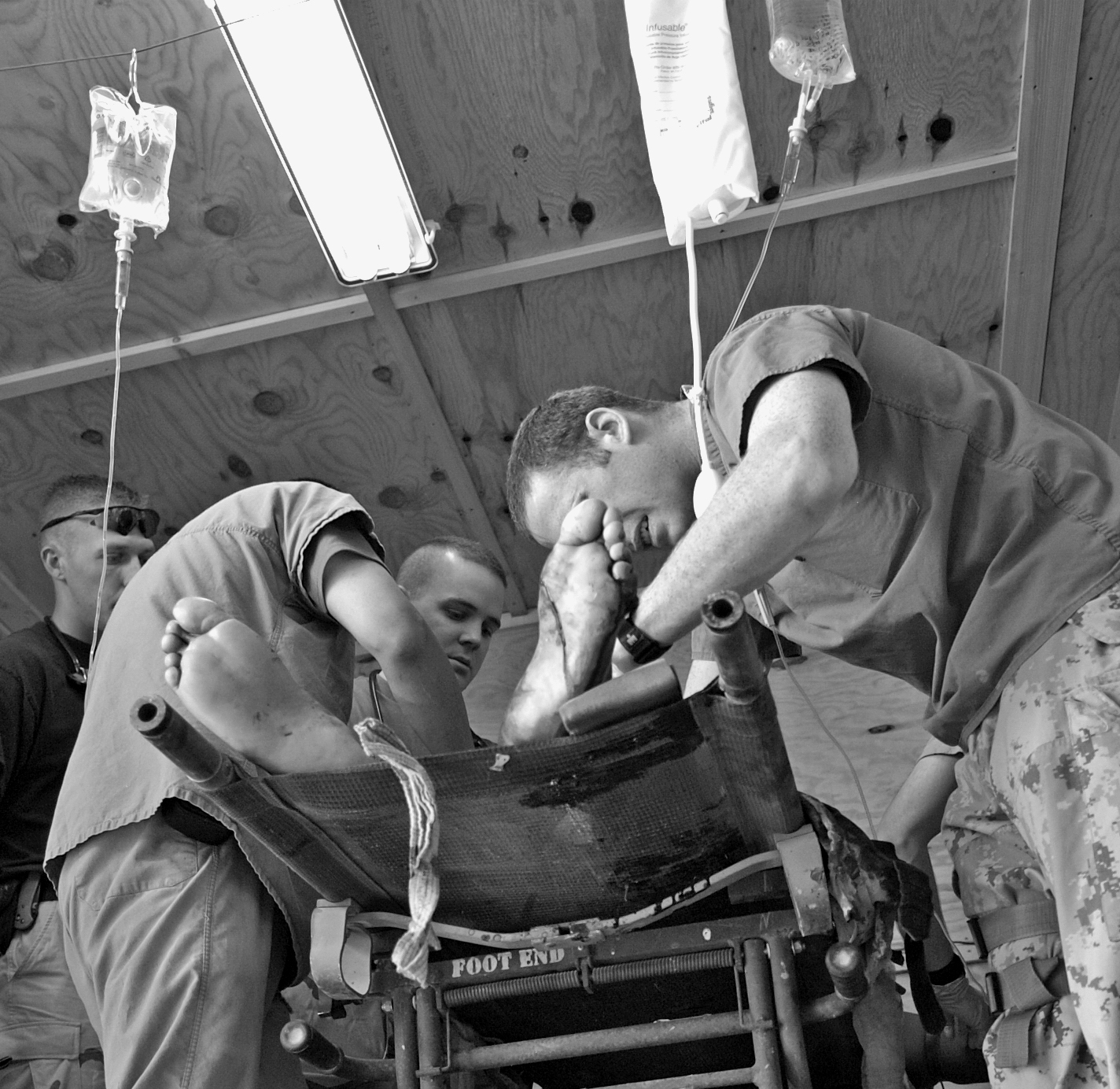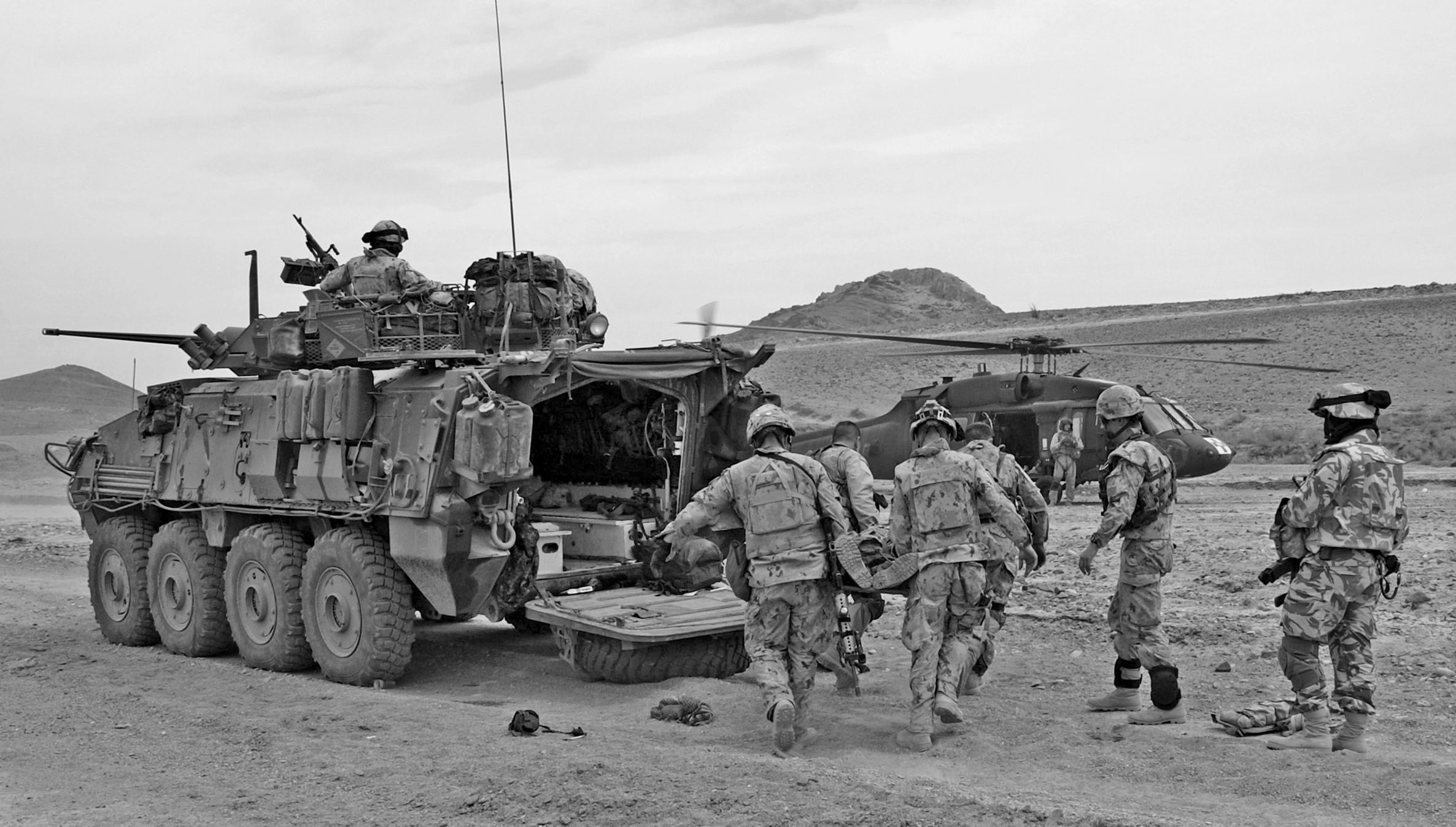CHAPTER 14
STRIKE
Armoured dudes, we like to be comfortable, fat and happy. Infantry dudes are different. They just want to go out and get messy.
MOTHER
September 2 was the day we began. Long before dawn, I took my position in the tactical operations room at our brigade headquarters at Kandahar Airfield. We had a variety of forces in place, some on the ground, some in the air. Matthew Sprague’s Charles Company and Mike Wright’s A Company were ready to swing around Bazar-e-Panjwayi to secure the high features of M’sūm Ghar and Mar Ghar. A few days earlier, Geoff Abthorpe’s Bravo Company had taken its position near Highway 1, ready to feint south at H-Hour while providing a northern screen throughout the battle.
At 0530, Charles and A companies moved out to M’sūm Ghar. From that vantage they would have an unobstructed view of objectives Rugby and Cricket, and dozens of Pashmul villages beyond. By 0600 they had arrived and found the high features unoccupied.
As the sun rose, the Canadians’ view across the river was clear enough to see leaflets still cluttering the banks of the Arghandab. Intent on avoiding civilian casualties, we had airdropped warnings of our upcoming attack across the region. They could also see Taliban fighters at work setting up their defences. Easy, early targets. The LAVs of Charles Company rolled into line and began firing. Within minutes, at least ten of the enemy had been hit. Then all was quiet.
Omer Lavoie was now prepared to execute our plan, one he had rehearsed and refined in the rehearsal of concept (ROC) drill. No one liked the earlier start date, but today was going to be the day.
This was to be NATO’s first major combat operation, and at the time I was trying to make any ROC drills inclusive of the Afghan military police, local government if necessary, and the team at large. I would say that the ROC drill went okay. I did not see anything that caused me to believe they weren’t ready to go, although I thought the objectives they picked should really be broken down into smaller objectives, so that they could be pursued end-to-end more discretely.
BEN FREAKLEY

Geoff Abthorpe was a gregarious, charismatic leader who always had a smile on his face. He was good at what he did—and he only got better as the tour went on. I would visit him in the field, and I greatly enjoyed our talks about tactics and the situation. I saw him develop into a highly capable combat commander.Credit 31
With the assets and enablers that Ben Freakley had freed up, our prospects were positive but we had to move quickly. Those resources wouldn’t be ours forever. Greg Ivey’s artillery battery set up camp 10 kilometres north of the battlespace, in an area that gave him enough room to position his M777s. From this artillery manoeuvre area (AMA), his guns began raining down fire on enemy positions in Rugby and Cricket, both of which were well within range of his howitzers. Apache attack helicopters wheeled around on station, moving as directed onto targets to fire their 30mm cannons, while Harriers and F-16s dropped 500-pound bombs and B-1 Lancers sent in precision-guided munitions from altitudes of 15,000 feet and above. Concussive waves rippled back across the river, and the sounds of the day could be heard hundreds of kilometres away. The battle was on.

The LAV III was a home for many Canadian soldiers. They lived out of this remarkable vehicle for most of their tour. It provided them with the means to move around the region, and provided fire support with a mighty 25mm cannon along with two other machine guns. The optics on this vehicle gave us a tremendous advantage on the battlefield and it was critical to how we deployed during Operation Medusa. We used its protection, cross-country mobility and stand-off capability to the max when we attacked into the Pashmul area. It is not an overstatement to say that the LAV III saved lives. It was the best vehicle in theatre, and Canadians benefited hugely from the protection it offered. Its manufacturer, GDLS London, even modified this vehicle throughout our time in Afghanistan, improving the LAV’s capabilities based on reports from soldiers in theatre.Credit 32
South of M’sūm Ghar, Andy Lussier’s Royal Canadian Dragoons sent back data on the movements of the enemy. But at 0930, they saw a horrific sight in the sky above them. A Royal Air Force Nimrod jet-engine surveillance aircraft drifted over their heads, spewing smoke and fire as it attempted to make Kandahar Airfield for an emergency landing. Originally a maritime patrol vessel, this particular Nimrod xv230 had been fitted with an electro-optical turret with the capability to transmit real-time video imagery to tactical commanders on the ground. We had been receiving a feed from the xv230 that morning. During a mid-air refuelling, a leak had occurred, allowing jet fuel to seep into the bomb bay where it was set on fire by either an electrical fault or the hot air from a heating pipe. The pilot reported the fire immediately, then dropped his aircraft from 23,000 to 3,000 feet in ninety seconds. An RAF Harrier scrambled to assist and was following the flaming aircraft as it passed over Task Force 31 and our ISTAR squadron. When just 40 kilometres shy of Kandahar Airfield, a first explosion tore one wing off and a second took the Nimrod apart. It crashed into the ground near the village of Chil Khor.
Andy’s team immediately took off toward the site of the crash. Following the soldiers’ code, they moved in to support with two priorities top-of-mind. They hoped to be able to tend to the injured if any survived. They also knew they had to reach the aircraft and its crew before the Taliban. A billowing pillar of smoke guided them as they neared, but as they entered the territory between Chil Khor and the neighbouring village of Fatehullah Qala, the twisting roads made the going uncertain. We had dispatched an Apache helicopter to the scene, and with their bird’s-eye view its crew were able to guide the Dragoons to the exact spot. Tragically, there was nothing to recover. The fire, the blast and the crash had obliterated all twelve RAF personnel, one Royal Marine and one British soldier. Operation Medusa was under four hours old and we had fourteen dead.
Back at M’sūm Ghar the artillery barrage continued, while at brigade headquarters Omer and I were making decisions about the upcoming assault on Objective Rugby. I pressed for a night crossing. Omer had a number of reservations and stated his strong preference for a daylight advance. We compromised on an 0400 start for the next morning. In the interim, Omer had to decide where and how to cross the river. Looking over from M’sūm Ghar at the infamous white schoolhouse that had claimed four lives on August 3 when Ian Hope and his team rolled onto this exact spot, one thing was clear. Wherever we chose to cross the river, it would be wide. Even in September, when the Arghandab isn’t at its peak flow, the distance from shore to shore can be a full kilometre, fully exposed. The crossing would likely be difficult. Even more so because, knowing we were coming, the Taliban would have mined all the expected crossings as they had the routes into Rugby from the north and east.
Engineers looked up and down the river for a tactically sound crossing. They knew that at least two platoons would head over at first, with engineers, clearance teams and troops from the Afghan National Army with their embedded American trainers. Key to all future efforts, a forward air controller would cross over with them to direct air support. Medics would be embedded too, to treat any wounded on the spot.
Ultimately, we made a tough but obvious decision. Charles Company would head from M’sūm Ghar directly across the river toward the objective. For a time, the conspicuous movement of Bravo Company in the north and a series of feints by Don Bolduc’s Task Force 31 and Andy Lussier’s ISTAR squadron in the south would keep the enemy guessing, so there would be at least some element of surprise. But that would end soon. The minute we began to ford the river in broad daylight, any doubt of our initial intent would be gone.
Artillery continued throughout the night, lighting up the sky in a fierce demonstration of firepower designed to confuse and overwhelm. Then, in the pre-dawn of Sunday, September 3, engineers headed down to the river to prepare for the crossing. They would have to breach both the river itself and a canal running parallel on the other side before our forces could move on the objective. It was near 0600 when the advance began, under cover of continued artillery and air support.
To our relief, the crossing was accomplished without incident. No IEDs. No rifle fire. No RPGs. No mortars. Mark Gasparotto’s engineers breached each waterway at the best spot, and then two platoons from Charles Company made their way across river and canal and onto dry ground. There they established a beachhead with their LAVs, G-wagens, bulldozers and front-end loaders fanned out in a semicircle facing the known Taliban positions. So far no trouble, but by then the morning had become uncomfortably quiet.
The next phase of the advance would also depend on the engineers. A corrugated pattern of high berms had to be flattened and deep ditches filled to allow the vehicles to pass overland through the first wide field. By 0800 that was done. Dismounted infantry were sent out onto the flanks to ensure the outlying buildings were clear, while 7 Platoon rolled up towards the objective, its LAV IIIs leading and heavy equipment following behind. Within minutes the LAVs had reached the white schoolhouse, where they stopped short in line abreast. This was, they discovered, exactly what the Taliban commanders had anticipated.
Having shown remarkable discipline, the enemy had remained hidden and silent as we pulled right up below them. They then burst into action on three sides simultaneously, subjecting 7 Platoon to a furious, extended hailstorm of rifle and RPG fire, trapping the armoured vehicles where they had stopped and making any effective reaction virtually impossible.
One LAV took a round squarely, firing shrapnel from the turret ring deep down into the vehicle and killing Sergeant Shane Stachnik instantly. Then RPG and small-arms fire slammed into a G-wagen where Warrant Officer Richard Nolan sat in the front passenger seat. He was fatally struck on the first round. The driver of the now-smoking wagon signalled for help, which came swiftly as three soldiers from a nearby LAV dismounted and ran through continuous enemy fire to get to their stranded colleagues, giving whatever first aid they could and then carrying the wounded back through the gauntlet and into their armoured vehicle. Led by Sergeant Scott Fawcett, Corporal Jason Funnel and Private Michael O’Rourke then crossed that perilous distance four times in a row as they took their fellow soldiers to safety without a thought for their own.
As 7 Platoon coped with the ambush, 8 Platoon was still pressing up on the left flank in continuous firefights, clearing one building after another as they moved steadily forward. The enemy’s knowledge of the layout of each building and connecting routes between them was superior, however. Even as 8 Platoon advanced, kicking doors, clearing houses and then moving on, the Taliban would reappear behind them having re-entered those buildings unseen. At the same time, units of the Afghan National Army were fighting up the right flank with impressive resolve, sometimes passing the men of Charles Company in their hurry to move on to the objective, and proving in the heat of battle that they too were fully committed to the fight.
By now everyone knew that the priority was to engage the enemy with enough force to free up the soldiers of 7 Platoon, who could then get their casualties back out of the firing line to be treated. Yet that withdrawal would have to be executed under constant enemy fire. When it began, one of the LAVs reversed out of the area and immediately hit a ditch where it ground to a halt, wheels spinning. Well within range, the Taliban poured fresh fire onto the vehicle, damaging but not piercing its armour on all sides. Another LAV pulled up to conduct a rescue. Its occupants jumped out to return fire, covering their comrades as they exited through the stranded vehicle’s escape hatch and dove into the waiting, operational vehicle.
In constant communication, everyone back at brigade and battalion headquarters knew how desperate the situation had become. Our aircraft circled overhead, waiting to take out Taliban positions with high-powered explosives, but Charles Company was too close to the enemy for safe targeting. Even so, one fighter let loose a single bomb that landed among the LAVs and bounced right through the line. It never exploded.
Pressing their advantage, the Taliban escalated their rate of fire as the company attempted to recover its vehicles. While towing the damaged G-wagen back toward the river, the driver of the towing vehicle steered too close to a breach embankment, allowing the wagon to tumble into the ditch below. When another of the LAVs hit early in the fight was hitched and towed, its unconscious driver was jostled awake and was then able to regain positive control of the armoured vehicle and get it back into action.
Major Sprague decided to pull off the position and withdraw Charles Company to safety. He gave the order to set up a casualty collection point (CCP) where the wounded could be tended. At the same time, the remaining vehicles could be either recovered or destroyed where they lay to deny their use to the enemy.
The CCP is a doctrinal norm taught to all troops. During a fight, whenever critical casualties are incurred, the priority is to get the injured treated with first aid and evacuated. Each soldier is trained extensively in first aid and, when in battle, equipped with field dressings and tourniquets to treat their own injuries if able. They are also taught to treat others quickly and effectively. A certain number of soldiers in each section are also instructed in advanced tactical care of the wounded. In addition, each platoon has at least one or two medics, specifically trained in battlefield medical care. Once immediate care is given, the next step is to move the casualty away from the battle to behind the fighting, where further attention can be given and medical evacuation carried out.

The medical support plan was one of those plans we spent an inordinate amount of time working on. We had four hospitals in RC South to attend to our wounded. The hospital success rate was well over 90 per cent. If it were not for these professionals, the consequences of the intense fighting would have been much more grave. Every time a soldier was wounded, the brigade sergeant major and I would go to the hospital to see what we could do and talk to them. Many times the media would be at the hospital door trying to get information. I would always walk in a back door to see the staff and the patients. This was about the troops, first and foremost, not a story. Visiting the hospital was part of my weekly routine, especially in quiet periods, which we didn’t have many of. It was always great whenever I was able to sit down with the medical staff and hear their stories and tell them just how much we appreciated them. When they were not dealing with our wounded, they took care of Afghans. The injuries we saw were numerous—including oil burns and combat wounds. It was always difficult dealing with Afghan patients, because they would then go from getting the best medical treatment possible to returning to the Afghan medical system, which was less developed. The children were the hardest cases to deal with. We even asked for baby machinery, which perplexed Ottawa initially, until they understood the volume of work we were doing.Credit 33
Every day I focused on where the soldiers were going to fight and how we’d be able to medevac them off the battlefield. Speed is critical. There’s a proven concept called the golden hour. If you can get injured soldiers off the battlefield within an hour with competent medical care, they’ve got a 95 per cent chance of surviving their wounds. I was focused on that daily, but I had limited medevac helicopters: only fifteen for the whole country; that was it. But I will say one thing: at no time ever was a soldier under my command, regardless of uniform or the flag they wore on that uniform, uncovered by a medical-evacuation helicopter, a network so they could talk and some form of fires. Not one day.
BEN FREAKLEY

Medevac was another crucial element for us to plan and execute. No soldier ever went outside the wire without ensuring that we had a medevac helicopter within the golden hour. If that was not in the concept of operations (CONOP), I wouldn’t approve it. Every man or woman had to know that they or their fellow soldiers would be taken care of in the event they were injured. This provided that little element of security that allowed everyone to focus on the task at hand. The medevac birds we had and their crews were heroes every day they flew. On board each aircraft was a specialized medic who would take over treatment of the casualty from the medic on the ground. When someone was wounded, we had medics right there. We also had other soldiers trained in advanced first aid. Every soldier also knew how to apply first aid to themselves. This system was critical to the overall operational effectiveness of our organization. Never have we put so much into the planning and execution of the medical system as we did during Afghanistan. My brigade surgeon, Lieutenant Colonel Jacques Ricard, was the best medical officer I have had the pleasure to work with. He and his team ensured we had the best medical support possible. Sadly, it was well used.Credit 34
It was Warrant Officer Frank Mellish who established the CPP that day, directing treatment of the casualties and arranging for evacuation. As part of the rescue mission, one of his soldiers was ordered to set off a white-smoke canister, and Greg Ivey’s firebase on M’sūm Ghar was assured that all combatants west of that rising smoke were hostile. That information was greatly needed, because no one observing these events from back at the firebase could tell who was who. They then began to rain artillery onto the enemy, hoping to force them under cover while Charles Company got out.
After a firefight lasting more than seven long hours, Charles Company proceeded across and back to their initial battle position on M’sūm Ghar. In those first few hours of battle, they had suffered four fatalities and seen twelve wounded. Adam Day summed it up well in his account of Operation Medusa, published in Legion Magazine a year later:
They’ve been to a place beyond the normal world. They’ve seen their friends lying wounded on the ground, seen them die. And they’ve seen their own death: it was right there, in the rockets flying by—the end of everything. It’s a place without illusions; a place where fear and courage are the same thing: live or die, you do your duty or you don’t. It’s a place from which any return is difficult.
Don’t feel sorry for them, they don’t want that. They are professional warriors and the first thing the men of Charles Company want you to know about the battle for Objective Rugby is that they didn’t lose. Not on the day. Not on the mission. The attack failed and it was bloody chaos. Yes. But the task force kicked a mighty amount of Taliban ass that day. The enemy were lined up and hidden, hundreds of them, firing from three sides. And the Canadians went forward, despite it all; they faced up and went into the guns, into the rockets, they attacked.
It was a tragic day, but we all knew what to do next. We would ready ourselves to go right back in.